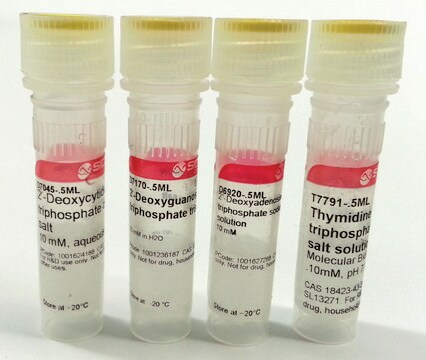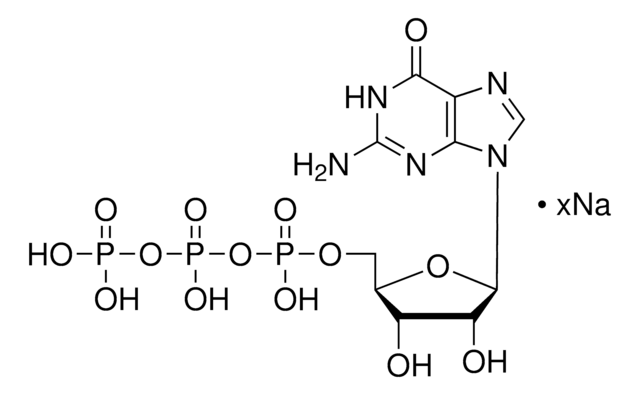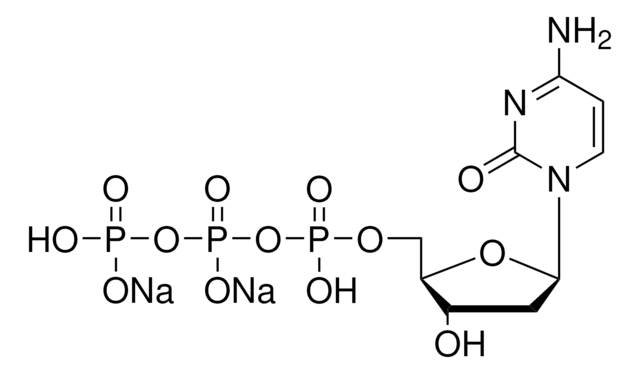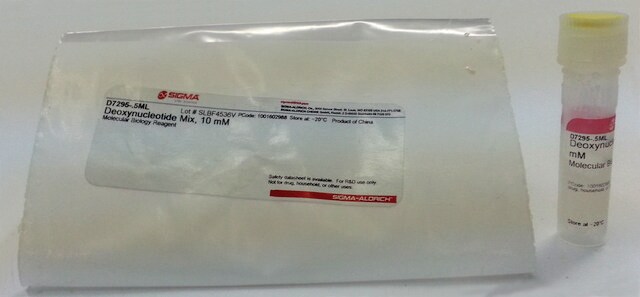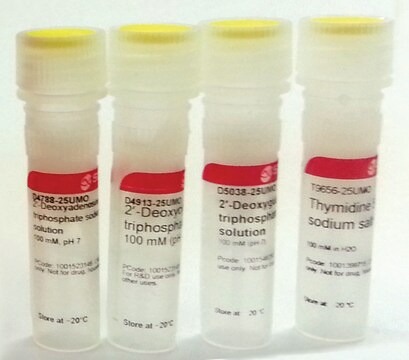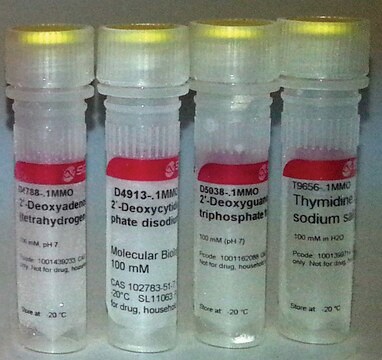D6920
2′-Desoxyadenosin-5′-triphosphat Natriumsalz -Lösung
10 mM
Synonym(e):
dATP
About This Item
Empfohlene Produkte
Assay
≥99%
Qualitätsniveau
Form
liquid
Konzentration
10 mM
Farbe
colorless
Fremdaktivität
DNase, RNase, NICKase, none detected
Versandbedingung
dry ice
Lagertemp.
−20°C
SMILES String
[Na+].Nc1ncnc2n(cnc12)[C@H]3C[C@H](O)[C@@H](COP(O)(=O)OP(O)(=O)OP(O)([O-])=O)O3
InChI
1S/C10H16N5O12P3.Na/c11-9-8-10(13-3-12-9)15(4-14-8)7-1-5(16)6(25-7)2-24-29(20,21)27-30(22,23)26-28(17,18)19;/h3-7,16H,1-2H2,(H,20,21)(H,22,23)(H2,11,12,13)(H2,17,18,19);/q;+1/p-1/t5-,6+,7+;/m0./s1
InChIKey
YJWCICGGRLOGEH-VWZUFWLJSA-M
Suchen Sie nach ähnlichen Produkten? Aufrufen Leitfaden zum Produktvergleich
Verwandte Kategorien
Allgemeine Beschreibung
Anwendung
Lagerklassenschlüssel
11 - Combustible Solids
WGK
WGK 3
Analysenzertifikate (COA)
Suchen Sie nach Analysenzertifikate (COA), indem Sie die Lot-/Chargennummer des Produkts eingeben. Lot- und Chargennummern sind auf dem Produktetikett hinter den Wörtern ‘Lot’ oder ‘Batch’ (Lot oder Charge) zu finden.
Besitzen Sie dieses Produkt bereits?
In der Dokumentenbibliothek finden Sie die Dokumentation zu den Produkten, die Sie kürzlich erworben haben.
Kunden haben sich ebenfalls angesehen
Protokolle
Protocol using antibody mediated hot start polymerase. Method has short activation period (<1min), and results in higher yields and more specificity over standard PCR methods.
Hot Start Taq Polymerase protocol to reduce non-specific amplification, with MgCl2 Optimization
Protocol using antibody mediated hot start polymerase with a red dye for easy gel loading. Method has short activation period (<1min), and results in higher yields and more specificity over standard PCR methods.
Unser Team von Wissenschaftlern verfügt über Erfahrung in allen Forschungsbereichen einschließlich Life Science, Materialwissenschaften, chemischer Synthese, Chromatographie, Analytik und vielen mehr..
Setzen Sie sich mit dem technischen Dienst in Verbindung.
